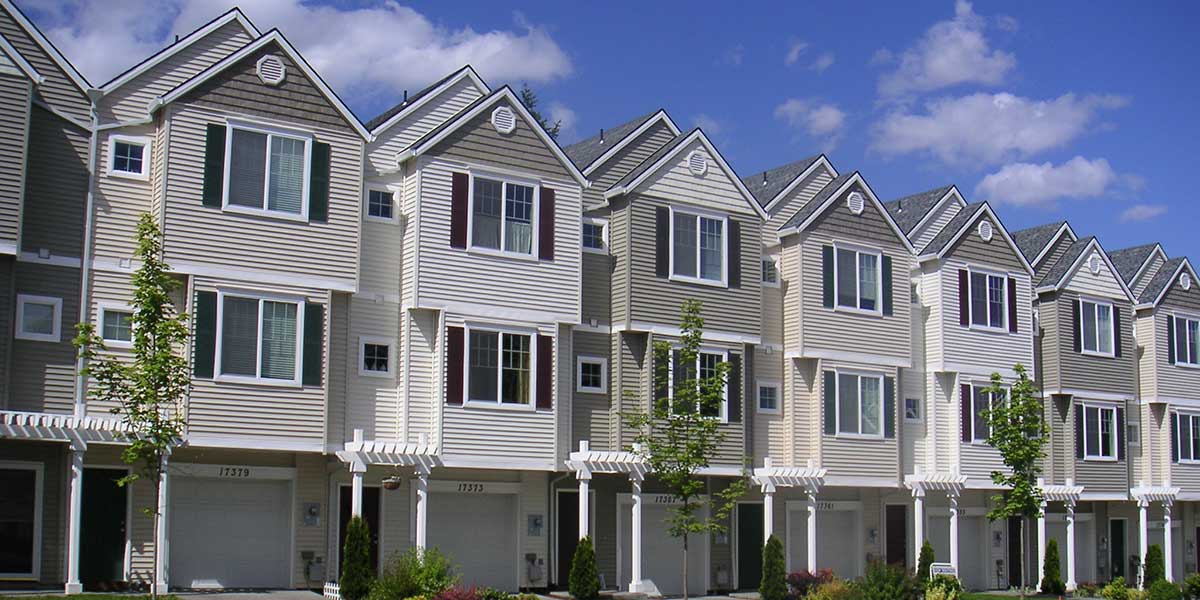Townhouses vs Houses vs Apartments

With Melbourne’s population set to increase to nearly 8 million by 2051, increases in dwelling density will be key to managing this population growth. It has been acknowledged by Plan Melbourne that it is no longer sustainable to continue expanding outwards to cater for the additional demand of 3.6M+ residents and the 1.4M+ new dwellings that will be required to sustain the growth.
Thus, focus will be placed, and demand will be driven upon medium-high density dwellings positioned around areas of existing infrastructure. Long established suburbs within Melbourne inner and middle ring suburbs will bring the highest demand for housing.
So what exactly is a medium-high density dwelling?
If you’re thinking an apartment block on every corner you would be incorrect, medium-high density dwellings include townhouses, reverse-living townhouses, and semi-detached row or terrace houses.
A key benefit of medium density dwellings is they offer many of the advantages of a house such as private open space and ground level access but are positioned in the market at a more affordable price point.
Melbourne is changing and so are the preferences of the people who live there, in 2011 The Grattan Institute released a report titled “The Housing We’d Choose”. The report explored the level of demand for different housing types and looked at whether or not this level of demand was being met by the market. The survey found that nearly 50% of Melbourne’s residents would be prepared to live in a medium density dwelling (townhouse or apartment/unit). The results of the report identified the following attributes influence the purchasing decision of individuals:
Dwelling Attributes
- House features (e.g .: number of bedrooms, garage, swimming pool)
- Safety and security (e.g.: access to secure parking; safety of people and property)
Locational Attributes
- Convenience and access (e.g.: proximity to a shopping centre; proximity to public transport)
- Attractiveness of environment (e.g.: clean area; proximity to a park)
These attributes were ranked in order of relative importance, and it is worth highlighting that four of the top five preferences were associated with the dwelling, including number of bedrooms, safety and number of living spaces. Whether or not the dwelling was attached or detached was also an attribute and ranked further down the list.
The research demonstrates that the size and number of spaces within a dwelling are more important than whether the dwelling is attached or detached. These high ranking attributes are significantly satisfied by townhouses whereas many apartments offer few or none of these attributes. A townhouse, through accommodating living space over two or three levels can typically offer more bedrooms and larger living areas than an apartment. The built form typically provides increased security through natural surveillance as well as limited entry points and an outdoor area.
‘A Comparison of townhouses to houses and apartments’
Whilst it is true that a detached house offers many of the attributes that have been highlighted above, houses are becoming somewhat unaffordable and out of reach for many. Therefore, offering choice in the marketplace is important in order to satisfy demand and also generate other benefits to the home owner and the community in general.
The complexities of the Australian property market mean that having the right information at your fingertips is crucial when it comes to deciding how best to invest the equity in your home. If you’re not sure where to go for the facts you need in order to make the right decision, we can help. With a wealth of experience in the property market in Melbourne and Brisbane, we’re ideally placed to assist investors wishing to take advantage of the fantastic property investment opportunities available in the area. Find out more here.
The post Townhouses vs Houses vs Apartments appeared first on IPRG.

No comments:
Post a Comment